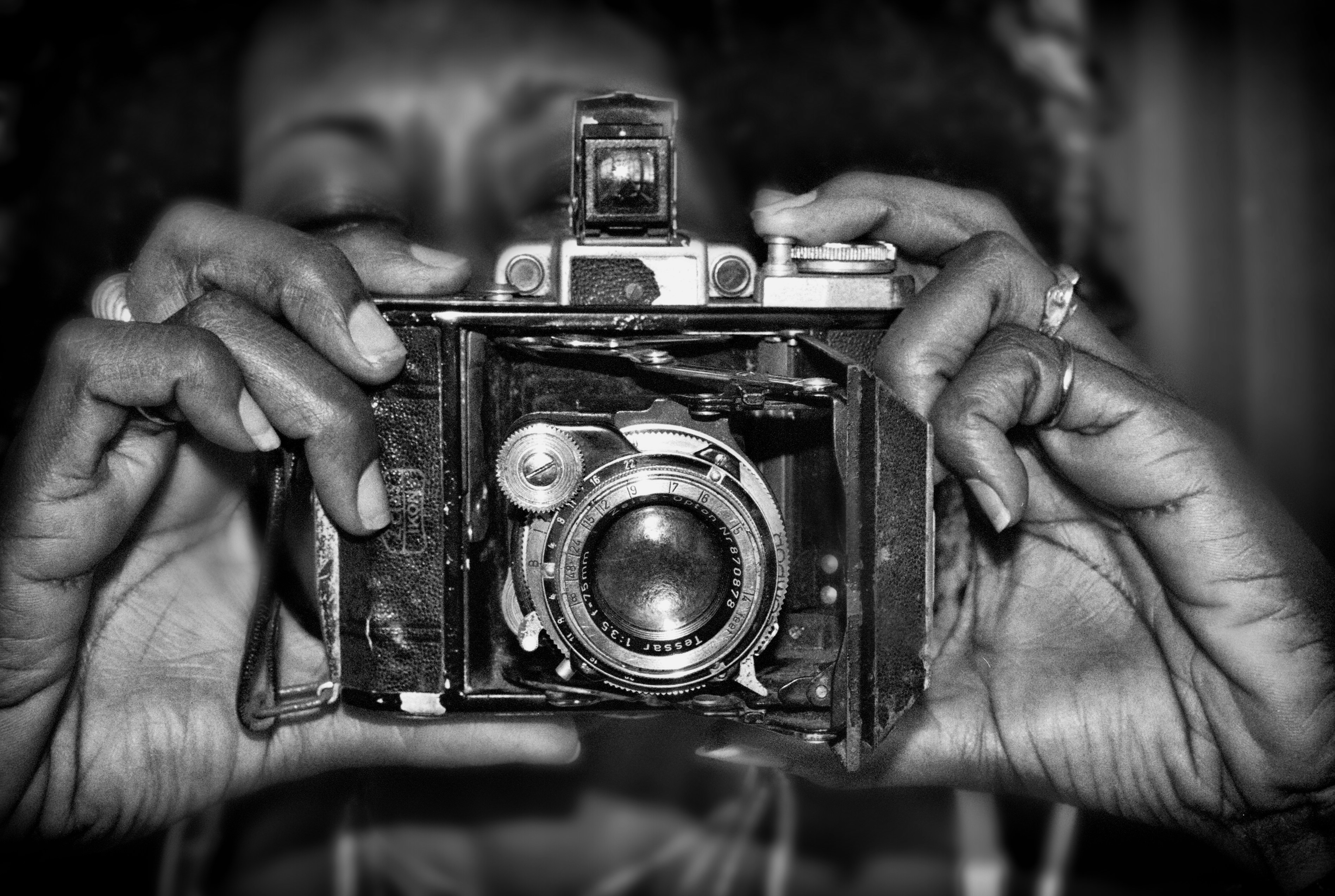The Art of Photographic Storytelling: The Power of Everyday Objects
In the world of photography, conveying a message through images is both an art and a science, one that can be mastered by anyone willing to explore the endless possibilities of their surroundings. Just think about it: every day, we walk past everyday objects—simple items that often go unnoticed. But when wielded wisely by a camera, these mundane items transform into powerful narrators of stories waiting to be told. Welcome to "The Art of Photographic Storytelling," where we delve deep into how to turn everyday objects into captivating imagery that resonates and communicates.
Understanding Photographic Storytelling

At its core, photographic storytelling is about more than just clicks and filters; it’s about capturing an essence, a moment that speaks volumes. Every object has a story—its own unique history, texture, and place in the world. When we photograph these objects, we're not just capturing their physical attributes; we’re inviting viewers to engage with their narrative.
Consider an old chair in a sunlit corner of a room. To one viewer, it might evoke nostalgia; to another, a sense of abandonment. These differing interpretations lie at the heart of storytelling in photography. It invites discussion, provokes thoughts, and stirs emotions, thus allowing photographs to become more than just images—they turn into experiences.
Embracing Simplicity: A Minimalist Approach

When honing your storytelling techniques, sometimes less is indeed more. Embracing minimalism in photography allows the viewer to focus keenly on the subject. The power of simplicity is illustrated perfectly in our post on embracing minimalism. By isolating ordinary objects against an uncluttered backdrop, you create an environment where the object takes center stage—encouraging deeper contemplation.
Identifying Everyday Objects as Storytellers

Finding the right subjects for your photography is essential. Look for objects that resonate with personal significance or cultural relevance—these can include items like vintage toys, books, or even kitchen utensils. The goal is to select objects that carry meaning to help shape the narrative you wish to share.
For instance, an old-fashioned teapot may evoke memories of family gatherings, while a well-worn pair of shoes might symbolize journeys taken or paths yet to explore. Each object tells a story, and by focusing on their nuances, you can capture authentic messages in your photographs.
Using Natural Light to Enhance Your Story

Light plays a pivotal role in storytelling through photography, as it can evoke different moods and emotions. Utilizing natural light dramatically affects how your everyday objects are perceived. A well-placed light source can create depth and dimensionality—casting shadows that enhance texture and form.
You can master this technique through our detailed guide on using shadows and natural light. By positioning your subject near a window during golden hour, you can create atmospheric images where the object not only stands out but essentially pulses with life.
Leveraging Color Psychology

Colors are more than aesthetic choices—they are integral narrative devices that communicate emotions and feelings. Understanding the psychology of color can significantly shape your photographic storytelling. For instance, warm colors often invoke feelings of warmth and comfort, while cool colors can induce tranquility or sadness.
Our article on the psychology of color breaks down how you can leverage these insights to bolster the emotional resonance of your photographs. If your everyday objects are rich in color, consider how these hues contribute to the narrative you intend to portray.
Creating Compelling Compositions

Composition is the backbone of storytelling in photography. The way you frame your shot, position your subject, and balance visual elements can significantly impact your image’s narrative. Use leading lines, rule of thirds, and even negative space strategically to drive attention toward your objects.
A well-composed photograph can guide the viewer’s eyes along an intended path, weaving their experience into the story you are telling. Tinker with different angles, settings, and focal points until you find a composition that feels right.
Telling Stories through Textures

Textures amplify the storytelling potential of your photography. The roughness of weathered wood, the smoothness of polished metal, or the softness of fabric can all evoke emotional responses that can deepen your visual narrative. Selecting objects with rich tactile quality can encourage your audience to imagine the feeling of these materials.
Understanding how to incorporate unique textures into your photography is explored in detail in our piece about textures in time, highlighting gear choices that can help you capture these elements beautifully.
Experimenting with Unconventional Gear
Sometimes, stepping outside traditional photographic boundaries can lead to surprisingly evocative results. Utilizing unconventional gear can turn a simple photograph of an everyday object into extraordinary visual storytelling. Vintage cameras, lens attachments, or even using your smartphone can produce unexpected effects with character.
In our article discover the art of imperfection, we explore ways to embrace the quirks of your equipment. When you let go of the idea of perfection, you often discover a new realm of storytelling opportunities.
Capturing Moments of Imperfection
Just as beauty can be found in imperfections, so can stories. Delving into the unpolished moments of life—such as capturing a cracked vase or an untidy desk—can be incredibly powerful. These snapshots reflect real-life narratives filled with character and authenticity.
Remember, your camera isn’t just a tool; it’s a gateway to experiencing, showcasing, and sharing life’s imperfect truths. Explore capturing those moments where things don’t go as planned, as suggested in our piece about embracing camera malfunctions.
Beyond Equipment: Photography is a State of Mind
While the gear you use can impact your outcomes, the mindset with which you approach photography is even more critical. Building a deep connection with your subjects will improve your storytelling capabilities. Ask yourself what narratives resonate with you, and let your passion guide your photographic practices.
Your connection does not solely revolve around objects, as your surroundings, emotions, and the stories of others enhance the narrative depth. Keep exploring, observing, and understanding multiple perspectives to grow as a photographer and storyteller.
Developing Your Personal Style
Unique styling in photography is vital in conveying your personal touch to the stories you tell. Think about what themes, palettes, or object types consistently resonate with you. Perhaps it’s capturing items that evoke nostalgia or those rooted in nature.
As you build a portfolio of work, analyze which elements repeat themselves and where you can refine your style further. Understanding what drives your vision will help you carve out a niche in the vast photography landscape.
Building a Narrative through Sequencing
A single photograph can speak volumes, but where it falls short, a series can amplify the narrative further. Consider exploring storytelling arcs by photographing a series of related objects or events. This approach establishes connections that single images might not capture, allowing viewers to traverse a journey and derive deeper meanings.
This concept can also apply to various photography styles, including documentary, portrait, and lifestyle photography. Through careful sequencing and thematic consistency, you can encourage viewers to engage more profoundly with your work.
Engaging with Your Audience
As you cultivate your photography and storytelling skills, don’t forget the power of audience engagement. Share your work with a larger community and observe their interpretations and reactions. Constructive feedback can illuminate new perspectives and inspire growth.
Consider utilizing platforms such as Instagram or photography blogs to share your stories. Foster discussions around your images to invite viewers to share their insights and build a community that appreciates the nuances in photographic storytelling.
Final Thoughts: Elevate Your Photographic Storytelling Journey
The journey of transforming everyday objects into powerful storytellers is one filled with boundless opportunities for creativity. By seeking beauty in simplicity, leveraging the interplay of light and color, and daring to engage with your audience on new levels, you can communicate stories that resonate deeply.
As you move forward, embrace the imperfections, challenge conventional methods, and never hesitate to experiment with your style. The world is your canvas, and every object is ready to narrate a tale. Capture those moments with purpose, and watch as they unfold into breathtaking visual stories.



